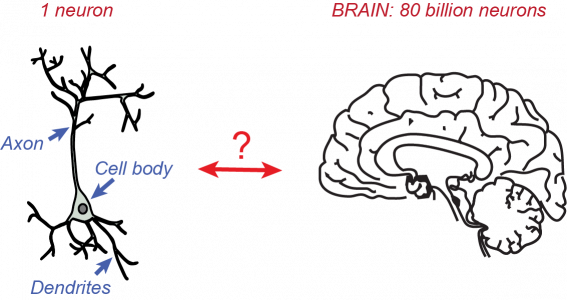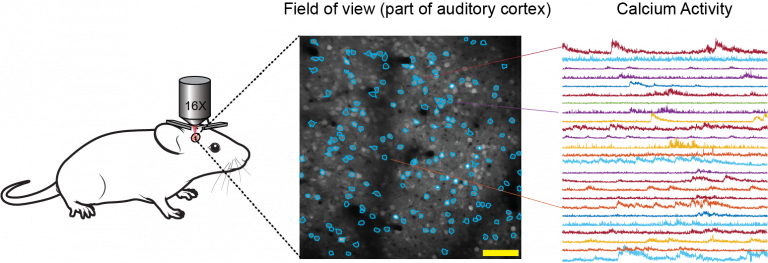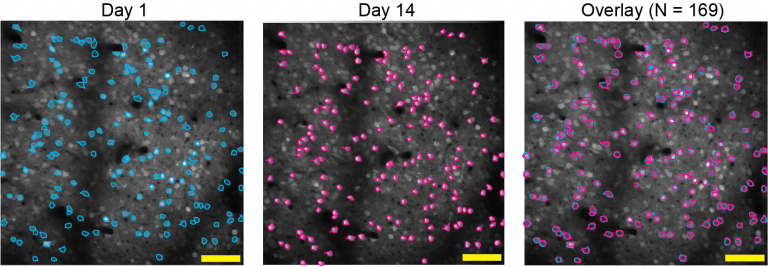A systems neuroscience approach to auditory cognition and learning
After many decades of studying the brain, we have a very good understanding of how an individual neuron works. Yet our brains are comprised of tens of billions of neurons, working together to create thoughts and produce actions. There is a fundamental gap in our understanding how assemblies of neurons process information and control behavior. The overarching goal of our work is to fill in this gap in knowledge and to establish how specific circuits of neurons contribute to perception and learning.

What do we mean by a circuit? Of course in the brain, circuits exist at multiple scales. For example, 3 neurons connected to each other form a circuit. Also, a circuit can be formed by a set of interconnected brain areas. Our view is that it is both. We think that we need to understand both how neurons work together within specific brain areas, and also across brain areas.

Some of our studies have focused on the interactions between excitatory and inhibitory neurons within a specific brain area.
In order to study brain function, until recently, most experiments relied on single neuron recordings, which only allowed to sample activity from one neuron at a time. Many discoveries were made with this technique, including the discovery of orientation neurons in the visual cortex by Hubel and Wiesel.

However, these methods do not allow to sample neurons at the level of networks. Any brain area is comprised of hundreds of thousands or millions neurons, and sampling one neuron at a time is impossibly slow. Last two decades have seen a revolution in technology that we can use to map the neuronal circuits and their function in the brain, and our laboratory has been at the forefront of these investigations. “Systems neuroscience”, which is the best way to describe our approach, allows us to record the activity of thousands of neurons simultaneously, within a specific brain area, or across brain areas, and to test the activity of any specific neuronal subtype or even just any specific neuron in a particular behavior.

With two photon imaging and development of calcium-sensing reporter, such as GCaMP, we are able to sample the activity of hundreds to thousands of neurons at the same time. Not only do we record this activity simultaneously from different neurons, but also, we are able to determine the spatial position of the neurons relative to each other, and, coupled with other tools, their cell types. Furthermore, we can come back to the same imaging site day after day and image the activity of the same group of hundreds of neurons.

Meanwhile, methods for electrophysiological recordings have advanced past the single electrode, and we are now able to use multi-electrode arrays of hundreds of contacts, such as Neuropixels, to record activity of neurons with sub-millisecond precision.

Another major advance has been the use of optogenetics, a technique that allows the experimenter to perturb the activity of a specific subset of neurons in the brain (activating it or deactivating it) to test their function. This is very much like turning on a light switch to see if a light bulb works, or else to find out which light in a string of lights on a holiday tree might be broken. We use these methods in mice who are trained to behaviorally respond to a specific sound to test the function of neurons in perception and learning. Using these methods, our laboratory has been discovering the neuronal mechanisms for auditory perception and learning.
